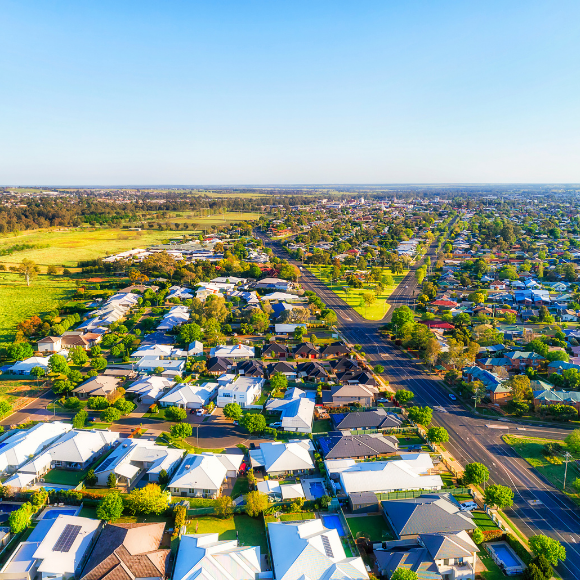
Australia’s smaller cities drove up home values in March, new data shows.
CoreLogic’s national Home Value Index (HVI) rose 0.7% in March, a subtle increase on the 0.6% lift recorded in February.
The rise was mostly driven by stronger conditions in Brisbane (up 1.8%), Adelaide (1.5%), Perth (0.3%) and the ACT (0.4%), along with several regional areas, offsetting a slip in values across Sydney (down 1%) and Melbourne (0%).
The first quarter of the year has seen Australian dwelling values rise by 2.4%, adding approximately $17,000 to the value of an Australian dwelling. A year ago, values were rising at more than double the current pace, up 5.8% over the three months to March 2021 before the quarterly rate of growth peaked at 7.0% over the three months ending May 2021.
Sydney’s growth rate is showing the most significant slowdown, falling from a peak of 9.3% in the three months to May 2021, to 0.3% in the first quarter of 2022. Melbourne’s housing market has seen the quarterly rate of growth slow from 5.8% in April last year to just 0.1% over the past three months.
CoreLogic research director Tim Lawless observed that while the monthly rate of growth was up in some places, there is mounting evidence that growth rates are losing momentum generally.
“Virtually every capital city and major rest of state region has moved through a peak in the trend rate of growth some time last year or earlier this year”, Lawless said.
With the softening in market conditions, the national annual growth rate (18.2%) has fallen below the 20% mark for the first time since August last year, after reaching a cyclical high of 22.4% in January 2021.
National housing turnover is also easing, with preliminary transaction estimates for the March quarter tracking 14.3% lower than the same period in 2021, although still 12.2% above the previous five-year average.
Lawless noted that the volume of housing sales is coming off record highs but there is some diversity across the capital cities in these figures.
“Our estimate of sales activity through the March quarter is 39% lower than a year ago in Sydney and 27% lower in Melbourne, while stronger markets like Brisbane and Adelaide have recorded a rise in sales over the same period”, he said.
Regional Australia continues to show some resilience to a slowdown with values increasing 5.1% in the three months to March, due largely to a rapid growth in population.
Advertised inventory, at a national level, is tracking 30% below the previous five-year average over the four weeks ending March 27. Again, it is diverse.
In Melbourne, total advertised supply was 8% above the previous five-year average towards the end of March, while the number of homes available to purchase in Sydney sit 7.5% higher than a year ago and only 2.6% below the five-year average.
Higher stock levels across these markets can be explained by an above-average flow of new listings coming on the market in combination with a drop in buyer demand.
“With higher inventory levels and less competition, buyers are gradually moving back into the driver’s seat”, Lawless said. “That means more time to deliberate on their purchase decisions and negotiate on price.”
In contrast, advertised stock levels in Brisbane and Adelaide remain more than 40% below the previous five-year average levels and around 20% to 25% down on a year ago.
It’s a similar scenario across regional Australia, where total advertised housing stock was 22% below last year’s level and 43% below the previous five year average. Such low inventory levels along with persistently high buyer demand continues to create strong selling conditions in these areas, supporting the upwards pressure on prices.
Rental trends are becoming increasingly diverse across Australia. At a macro level, rents are still rising at well above average rates. The rate of growth in unit rents has strengthened to reach a cyclical high of 3.0% in the March quarter, rising at a materially faster pace than house rents (2.4%).
With national rents up 2.6% over the March quarter and housing values rising by a lower 2.4%, gross yields have posted a rare rise in March, up two basis points from a record low of 3.21% in January and February to 3.23%. If rents continue to outpace housing values, which is likely if the housing market moves into a downturn, yields will continue to recover.

